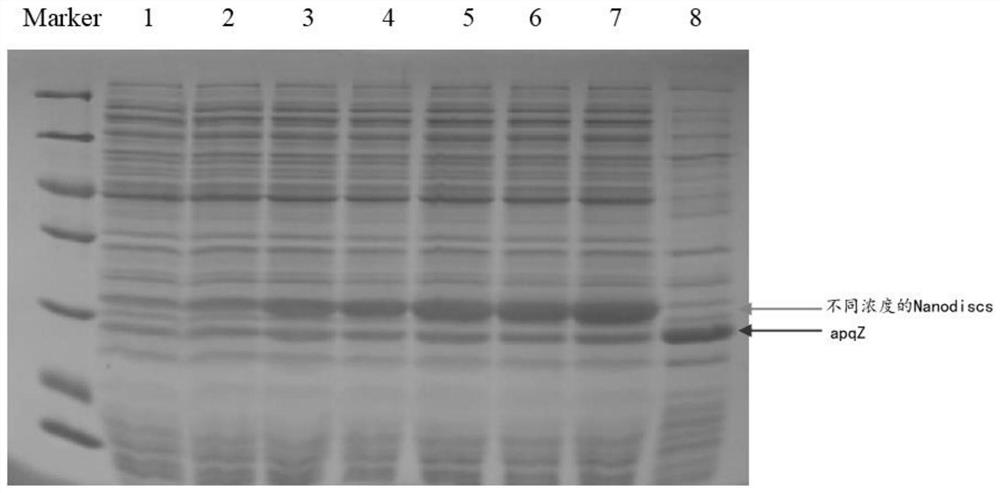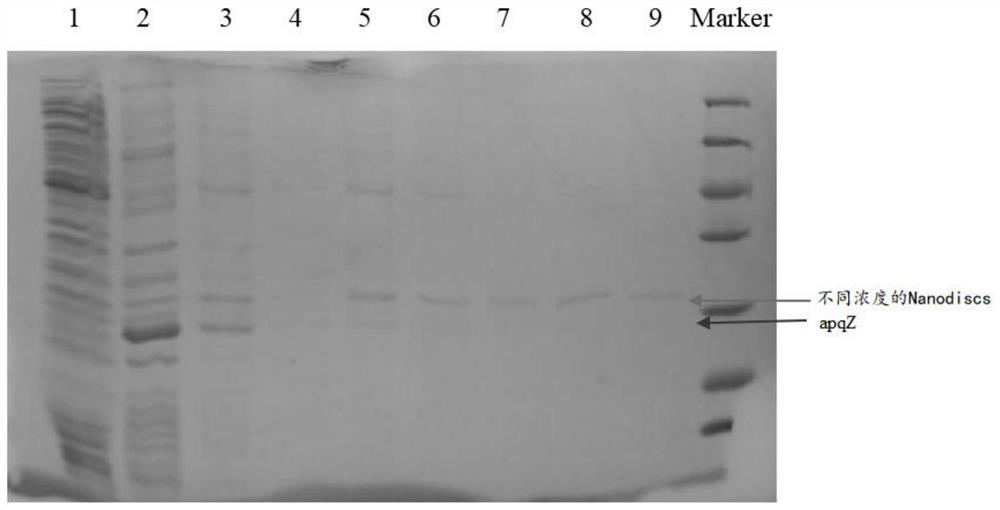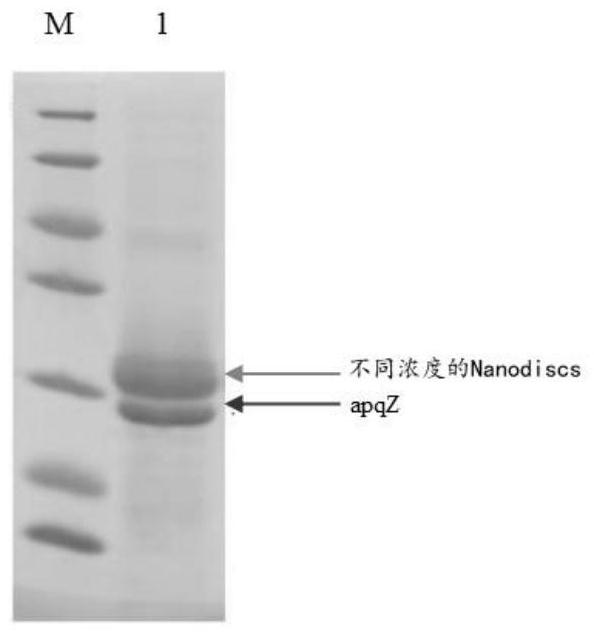Membrane scaffold protein, phospholipid nanodisk and nanoparticle as well as preparation methods thereof
A technology of phospholipid nanodiscs and membrane scaffolds, applied in chemical instruments and methods, nanomedicine, nanotechnology, etc., can solve the problems of large activity loss and achieve high success rate, large protein activity, and small batch-to-batch difference
- Summary
- Abstract
- Description
- Claims
- Application Information
AI Technical Summary
Problems solved by technology
Method used
Image
Examples
preparation example Construction
[0044] According to another typical implementation of the embodiments of the present invention, a method for preparing the membrane scaffold protein is provided, the method comprising:
[0045] Obtain a gene fragment encoding the amino acid sequence shown in SEQ ID NO.1;
[0046] The gene fragment is cloned between the NcoI and HindIII restriction sites of the pET28a vector to obtain the recombinant vector pET28a-MPS1D1;
[0047] After transforming the recombinant vector pET28a-MPS1D1, inducing expression and purifying, the membrane scaffold protein is obtained.
[0048] According to another typical implementation of the embodiments of the present invention, there is provided a phospholipid nanodisk, the preparation raw materials of the phospholipid nanodisk include membrane scaffold protein solution, lipid solution and detergent DPC; wherein, the membrane scaffold The protein solution is a solution obtained by mixing the membrane scaffold protein with a buffer; the lipid sol...
Embodiment 1
[0076] Example 1 Preparation of recombinant vector pET28a-MPS1D1
[0077] 1. The amino acid sequence of the membrane scaffold protein MPS1D1 is shown in SEQ ID NO.1.
[0078] 2. Acquisition of Membrane Scaffold Protein MPS1D1 Gene Fragment
[0079] The gene fragments were synthesized by Wuhan Jinkairui Bioengineering Co., Ltd. Primers were designed, and the primers are shown in Table 1.
[0080] Table 1
[0081]
[0082] Using the synthesized gene fragment as a template, the primer pair shown in SEQ ID NO.3-4 was used to carry out PCR reaction, and the reaction system is shown in Table 2.
[0083] Table 2
[0084] project volume template 4μL Upstream primer (F) 2μL Downstream primer (R) 2μL 10×Buffer 20 μL dNTPs 16μL pFu enzyme 2μL Add water to 200μL
[0085] The PCR reaction program was: pre-denaturation at 94°C for 4 min; denaturation at 94°C for 30 sec, annealing at 52°C for 45 sec, and extension at 72...
Embodiment 2
[0102] Example 2 Expression and purification of membrane scaffold protein MPS1D1 protein
[0103] 1. Expression of vector pET28a-MPS1D1 protein
[0104] Prepare the Escherichia coli expression host strain Rosetta (DE3) and melt it on ice, and add the pET28a-MSP1D1 plasmid. Place on ice for 30 minutes; heat shock at 42°C for 90s, place on ice for 1 minute, add 800 μL of preheated LB medium, and place in a shaker at 37°C for 158r / 120min. Centrifuge at 6000r for 4min, absorb 800μL supernatant in the ultra-clean bench, mix the remaining bacterial solution, and spread it on a plate containing K+; invert the plate, and culture it overnight in a constant temperature incubator at 37°C.
[0105] Pick a single colony and add it to a LB (3mL) test tube corresponding to the resistance, put it in a shaker and culture it for 3h, take 700μL of the suspension and add it to 100μL (C=50%) of seed-preserving glycerol, shake well, and put it in the refrigerator ( -20°C) for freezing. Then add ...
PUM
 Login to View More
Login to View More Abstract
Description
Claims
Application Information
 Login to View More
Login to View More - R&D
- Intellectual Property
- Life Sciences
- Materials
- Tech Scout
- Unparalleled Data Quality
- Higher Quality Content
- 60% Fewer Hallucinations
Browse by: Latest US Patents, China's latest patents, Technical Efficacy Thesaurus, Application Domain, Technology Topic, Popular Technical Reports.
© 2025 PatSnap. All rights reserved.Legal|Privacy policy|Modern Slavery Act Transparency Statement|Sitemap|About US| Contact US: help@patsnap.com



